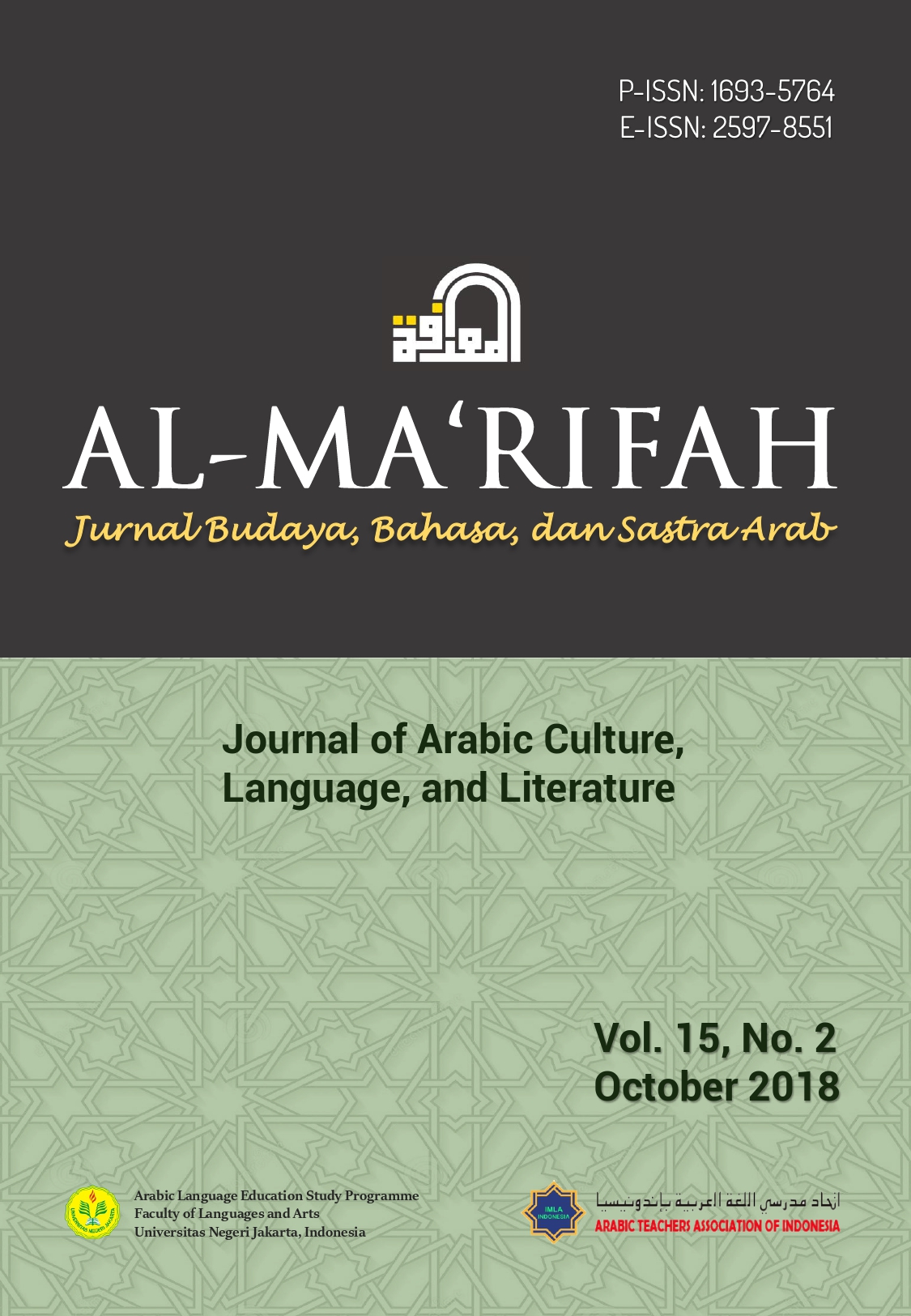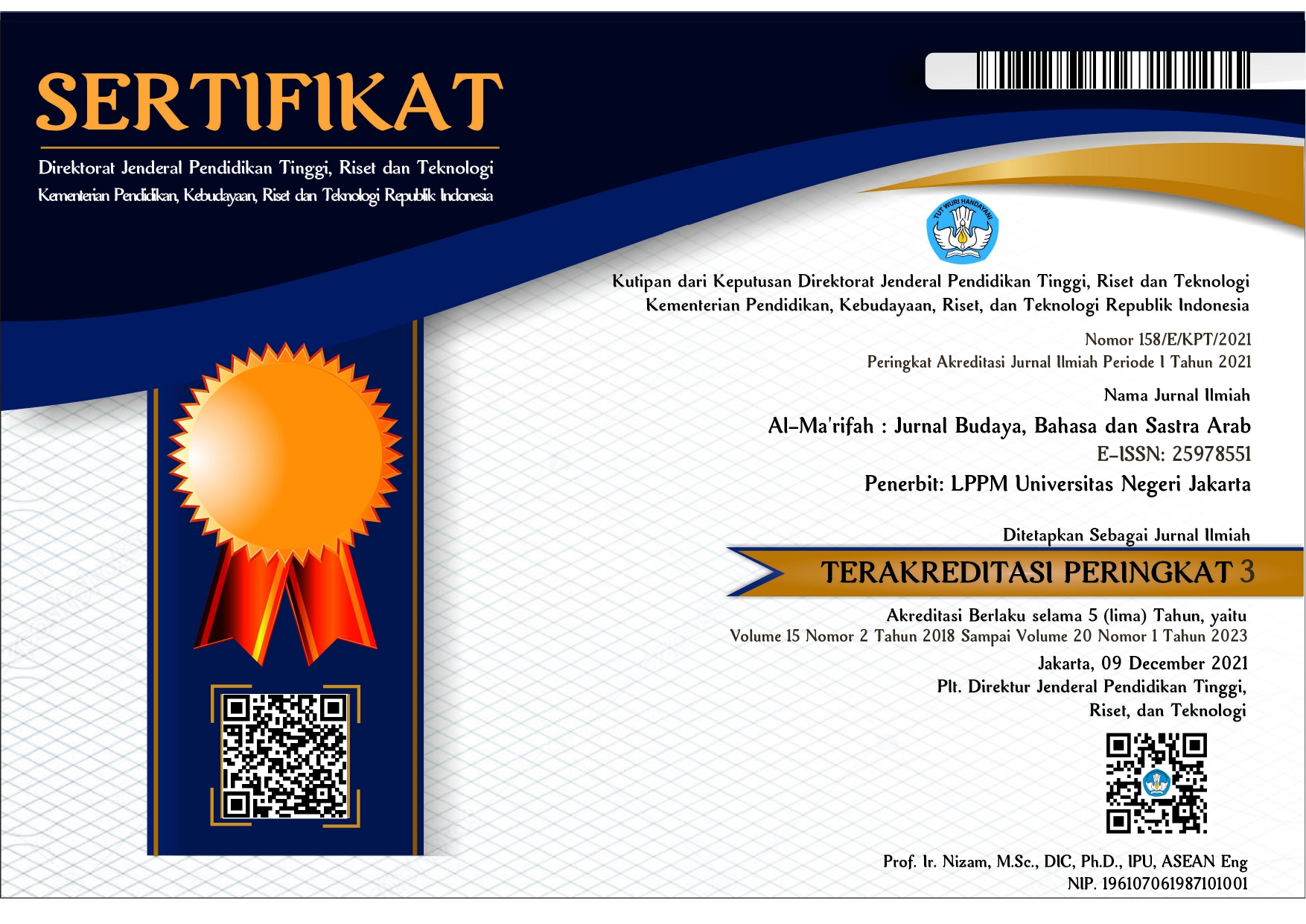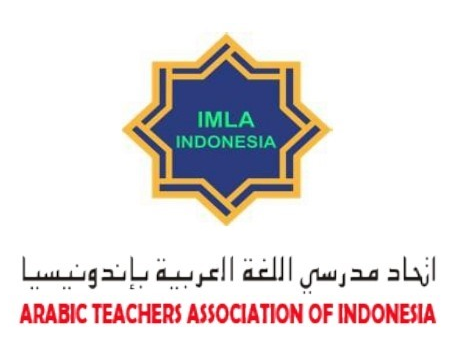Tawaqquf Fahm Nuṣūṣ al-Waḥyi ‘alá Ma‘rifat al-‘Arabīyah: Amthilah Taṭbīqīyah ‘alá al-Mustawayāt al-Arba‘ (al-Ṣawt, wa-al-Bunyah, wa-al-Tarkīb, wa-al-Dalālah)
DOI:
https://doi.org/10.21009/almakrifah.15.02.05Keywords:
Arabic phonology, Arabic morphology, Arabic syntax, Arabic semantic, texts of revelationAbstract
This article reports the significance of Arabic phonology, morphology, syntax, and semantics in understanding the texts of The Holy Quran and hadith of the Prophet Muhammad (peace be upon him). It presents a variety of phonological, morphological, syntactical and semantic examples to illustrate their significance to correctly understand the meaning of the holy texts. It was concluded that it is very vital to put all these four linguistic levels in the consideration to understand the correct interpretation of the texts especially when it comes to teaching Arabic to non-native speakers for teaching Arabic language curricula for non-native speakers to the development and activation.











